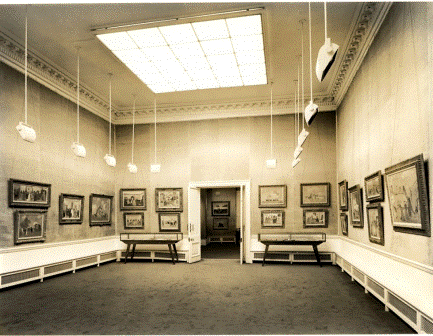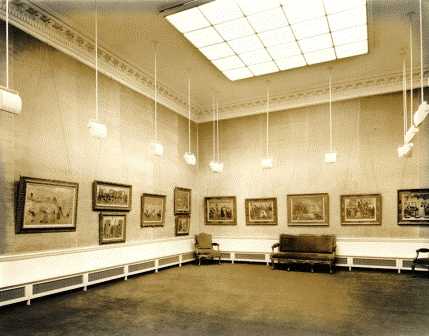PEDRO FIGARI
www.pedrofigari.com
sitio web de Fernando Saavedra Faget
fernandosaavedra@pedrofigari.com - figarisaavedra@hotmail.com
PEDRO FIGARI at WILDENSTEIN, LONDON
 |
 |
 |
The art of Pedro Figari is in many ways exceptional. From the fact that he did not take seriously to painting till he was sixty and had led a very full life as a successful lawyer and a prominent member of Parliament one might expect his work to be amateurish, but this is far from being the case. At first sight it may seem naïve, but this impression is entirely deceptive: the simplification of colour and drawing and the elimination of weight and space are thought out deliberately and are essential to the particular kind of evocation which the artist sought.
Greater naturalism and a more convincing spatial structure would destroy the near-drream effect which Figari achieves, particularly en the paintings in which he reconstructs scenes remembered from his childhood, scenes which belonged to the last phase of colonial life in Uruguay. No doubt these visions are idealized, but they are never sentimental and they are always convincing.
Secondly Figari is an example of that rare phenomenon, an artist who absorbs a completely foreign style, developed in another country for quite other purposes, and yet makes sit completely his own. He clearly admired and studied the works of Bonnard and Vuillard, whose interest lay in painting the closed airless rooms in which the Parisian bourgeois lived their apparently motionless lives, but these artists must have been astonished to see their technique used to depict the open spaces of the pampa and the violent movement and brilliant colour of Negroes dancing. And yet Figari did precisely this with complete success. He is not limited to these themes, however, and some of his most moving paintings show melancholy subjects of figures in repose, for instance his funeral processions and scenes outside the barred windows of colonial houses. His subjects are all taken from his own vision of his own recollections; but his paintings are not for that reason monotonous, for they reflect all at he aspects of a colonial life which was apparently as varied as it was attractive.
Anthony Blunt (foreword to the catalogue)